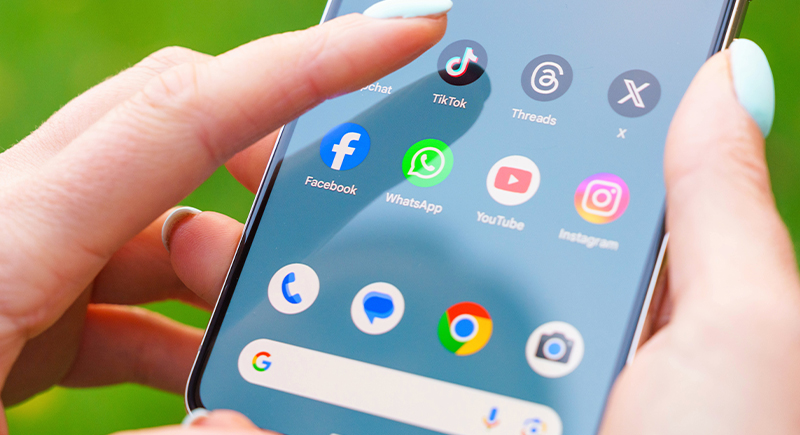The Mandela Effect: Why Large Groups of People Remember the Same False Memory
Large groups of people sometimes share the same memory of an event or detail that never actually happened. This strange phenomenon is known as the Mandela Effect, and it has become one of the internet’s favorite mysteries.
The term was coined in 2009 after many people claimed to remember Nelson Mandela dying in prison during the 1980s, even though he lived until 2013. Since then, countless examples have surfaced, from misspelled brand names to movie quotes that were never said.
You swear you heard it right. The line was “Luke, I am your father.” You could bet money on it. But when you check the actual clip from “The Empire Strikes Back,” the words are different: Darth Vader says, “No, I am your father.” It’s that uneasy feeling you get when your memory clashes with the facts.
Famous Cases That Won’t Leave People Alone
Paranormal researcher Fiona Broome explained how she, along with many others, remembered Nelson Mandela dying in a South African prison in the 1980s. They remembered news coverage, emotional speeches, and national mourning. But Mandela was alive, released in 1990, and went on to serve as South Africa’s president. He didn’t die until 2013. Broome’s discovery that large groups of people shared the same wrong memory led to the phrase that now covers everything from cartoon logos to misquoted movie lines.
The list of examples is long, and some have become internet legends. There’s the children’s book series “The Berenstain Bears,” remembered by many as “Berenstein.” There’s a non-existent peanut butter called Jiffy, a nonexistent movie called “Shazaam” starring Sinbad, and a Monopoly mascot who people insist wore a monocle. Star Wars fans misquote lines, Snow White fans repeat the wrong version of the Queen’s mirror request, and a whole camp of people claim Pikachu once had a black stripe on his tail.
It doesn’t stop there. Logos and branding fuel a lot of these mix-ups. The Fruit of the Loom logo has never included a cornucopia, though many people recall it vividly. Looney Tunes was never spelled “Toons.” Curious George never had a tail. When you see the correct versions, the mind still struggles, because the wrong ones feel more natural, more believable.
Why Do False Memories Spread?

Image via Canva/Khwanchai Phanthong’s Images
Psychologists argue that human memory is not a recording device. Every recall is a reconstruction, and details are vulnerable to alteration. The brain fills in gaps, a process known as confabulation. It doesn’t involve lying, but instead produces an answer that feels right, even when it’s wrong. In fact a 2020 overview noted that groups often align on the same errors and turn individual slips into collective false memories.
Research at the University of Chicago in 2022 highlighted how consistent these errors can be. In controlled experiments, people confidently drew or described iconic characters with details that were never there, like Mr. Monopoly’s monocle or Pikachu’s black-tipped tail.
Strikingly, participants who had just been introduced to these characters sometimes reproduced the same errors minutes later. This suggested that the Mandela Effect doesn’t require long exposure or cultural buildup.
The Role Of Association And Expectation
Memory often leans on patterns and connections. If Henry VIII is remembered as holding a turkey leg in a portrait, it’s likely because his image as a large man who loved food created a natural mental link.
Similarly, Monopoly’s mascot looks like he should have a monocle because he fits the image of a wealthy banker. Pikachu’s imagined tail stripe may stem from his black-tipped ears. These associations get cemented in recall, so when the brain tries to reconstruct, it plugs in the “missing” detail.
The Deese-Roediger-McDermott test illustrates this clearly. In this experiment, people are asked to recall lists of related words like “thread, pin, cotton.” They often add “needle,” even though it wasn’t on the list. The mind fills in what it expects to see, and the memory feels complete. Apply this logic to pop culture and branding, and you get masses of people swearing by details that never existed.
Internet Communities As Amplifiers

Image via iStockphoto/georgeclerk
The Mandela Effect grew in scale thanks to the internet. False memories spread quickly online and pick up credibility when large groups confirm each other’s experiences. A 2018 study that analyzed over 100,000 Twitter threads found that false stories spread 70 percent faster than true ones. And they weren’t carried by bots. Once a detail like “Shazaam with Sinbad” is mentioned, people pull on vague recollections and reinforce each other until it feels like a shared truth.
Communities on platforms like Reddit, TikTok, and YouTube turn these quirks into collective games. People compare notes, test each other’s memories, and debate explanations. This makes the false versions even stickier. Repetition increases confidence in memory, so the more a detail is retold, the more people believe it.
Alternate Reality Theories
For some, the idea of simple brain errors doesn’t fully explain the scale of shared false recall. That’s where alternate reality theories come in. Fans speculate about parallel universes overlapping, timelines shifting, or disruptions caused by particle experiments at CERN’s Large Hadron Collider. While entertaining, these theories remain unsupported by scientific evidence. Researchers point out that false memories happen even when someone is introduced to information for the first time, suggesting there’s no need to invoke multiple universes.
Still, conspiracy theories continue because they add intrigue. A universe slip-up feels more exciting than the reality that memory is fallible. In periods of uncertainty, like the pandemic years, belief in these ideas became even more common, as people searched for explanations that offered a sense of mystery or deeper meaning.